https://www.herald.co.zw/gonjon-pin-a-must-read-on-a-long-journey

-->
by Memory Chirere
Published by amaBooks of Zimbabwe and
several other publishers, The Gonjon Pin and Other Stories is a collection of
short stories by African writers shortlisted for the Caine Prize 2014 and from
the Caine Prize annual writing workshop held in Vumba, Zimbabwe, during the
same year.
On receiving this anthology just before
the Harare launch, I quickly noticed that it was a massively solid book.
I was intimidated. I am used to reading
the usually thin volumes normally associated with short books in Africa. But
since these are stories from one of the most prestigious awards in African
literature today, I hoped that quality will pay for the volume.
I do not remember the last time I felt
like this about a book. I did not want to start with the shortlisted stories. I
wanted to make my priorities right. I had been invited to anchor the discussion
at the Harare launch, where some writers would also give readings.
I am attracted to the Zimbabwean stories.
Having been raised on the short stories
of Luis Honwana, Charles Mungoshi and other writers from the Southern African
sub-region, I find Lawrence Hoba’s “Pam Pam” a very comfortable landing pad.
Due to my background, this is the story that speaks most directly to me.
The sensitive child is snooping into the
seemingly unusual world of the grown-ups, who are also trying to come to terms
with the most “weird” in their midst. Muffled voice. Understatement. Power
play. A surprise ending. Hoba’s deft engineering- one soft word on top of the
other…and on top of the other, almost like bricks, tells me that this was not
easy to write.
“The Sonneteer” must be the “craziest”
story in this book! I am hoping that somebody will agree with me. I love the
deluge of sonnets towards the end because it is a clever way of flourishing out
after such a deep rendition on the tumultuous Zimbabwean condition. The story
ends in successive loud spurts like a gas canister unleashed onto a hapless
crowd.
I like stories like this one, driven by
silences — especially by what characters do not say to one another.
We are no longer reading, but are also
writing the story alongside Philani Nyoni. The language is vigorously God
forsaken and its rigours remind me of the late Dambudzo Marechera.
Later, at the launch itself, I was
impressed by Isabella Matambanadzo’s views.
Her “All The Parts of Mi”, just like
Abubakar Adam Ibrahim and Chinelo Okparanta’s stories, is about betrayal,
intimacy and courage. During the discussion, I asked Matambanadzo about what
she thinks about the use of the erotica in stories. Her candid answer sent the
audience roaring in approval. It took us a while to return to silence.
“The Intervention” by Tendai Huchu is
part of the Caine 2014 short list. It confirms my thoughts about his previous
stories, especially the one which I have been struggling to translate from one
language to the other. Here is a writer who has an eye for dramatic irony and
the incongruence of human character. His stories challenge the reader to work
from many points of view.
In “The Murder of Ernestine Masilo” by
Violet Masilo, the protagonist dies slowly from the first time you meet her.
Her death is not shocking, but why she dies is riveting.
You are left with a feeling that a flower
has withered before anyone could pluck it and place it in a vase. If only there
was enough love. Typical character in typical circumstances.
“Music From A Farther Room” by novelist
Bryony Rheam is a story filled with utmost colours and sounds and wide spaces.
It is a piece of painting or tapestry.
If it were a piece of cloth, this story
would flutter in the wind like a kite, landing on its nose until somebody picks
it and throws it back into the sky just in order to see it and shout like a toddler! I read it over and over for the sheer serenity that it gives me.
Barbara
Mhangami-Ruwende’s “Blood Work” is filled with
a delicate tension right from the statement “I don’t like black people” up to
the end and you are always on the edge. I hope I am not being prescriptive, but
this looks like my favourite story in this book, at least for now.
I then hurry to the winning story itself,
“My Father’s Head”. I had read elsewhere that it is a story filled with sad
memories. I do not disagree, but I discover that it is full of sweet sadness
with more of sweet. Sad but not depressing.
The kind of balance associated with
kopjes. On the second and even third reading, I begin to feel that this is
about a daughter’s celebration of a father’s not so happy life. The language is
syrupy, describing expanses of time and dwelling on tiny-tiny details of life
like the paw of a dog and the flutter of a butterfly. I agree with the judges.
It was right that this story won. Maybe it is not a story after all. It is
life.
Among the shortlisted stories, I also
have lots of respect for Billy Kahora’s “The Gorilla’s Apprentice”. Loneliness
of people, and of animals too?
A unique and unfulfilled camaraderie
between victims from different communities? This story could just have won.
However, in just a few of these stories
here, adjectives tend to pile on top of one another; adverbs trip over each
other. Colons clog the flow of even short paragraphs, and the plethora of
semicolons often cause the reader to throw up his hands in exasperation.
If you are able to forgive the very few
overwritten pieces, The Gonjon Pin and Other Stories is something to carry on
a journey.
The 2019 Caine Prize anthology, soon to be published in Zimbabwe by amaBooks, celebrates 20 years of the competition with the inclusion of all the winning stories, including those of the Zimbabwean winners Brian Chikwava and NoViolet Bulawayo. It includes an introduction by Ben Okri.
........................



















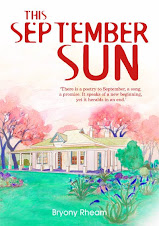.jpg)



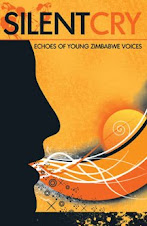
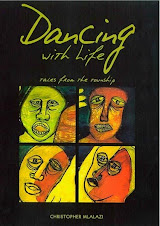

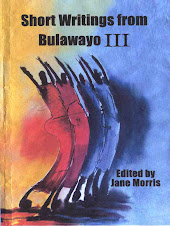


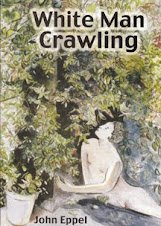










.jpg)





















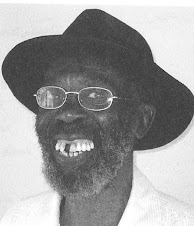






No comments:
Post a Comment